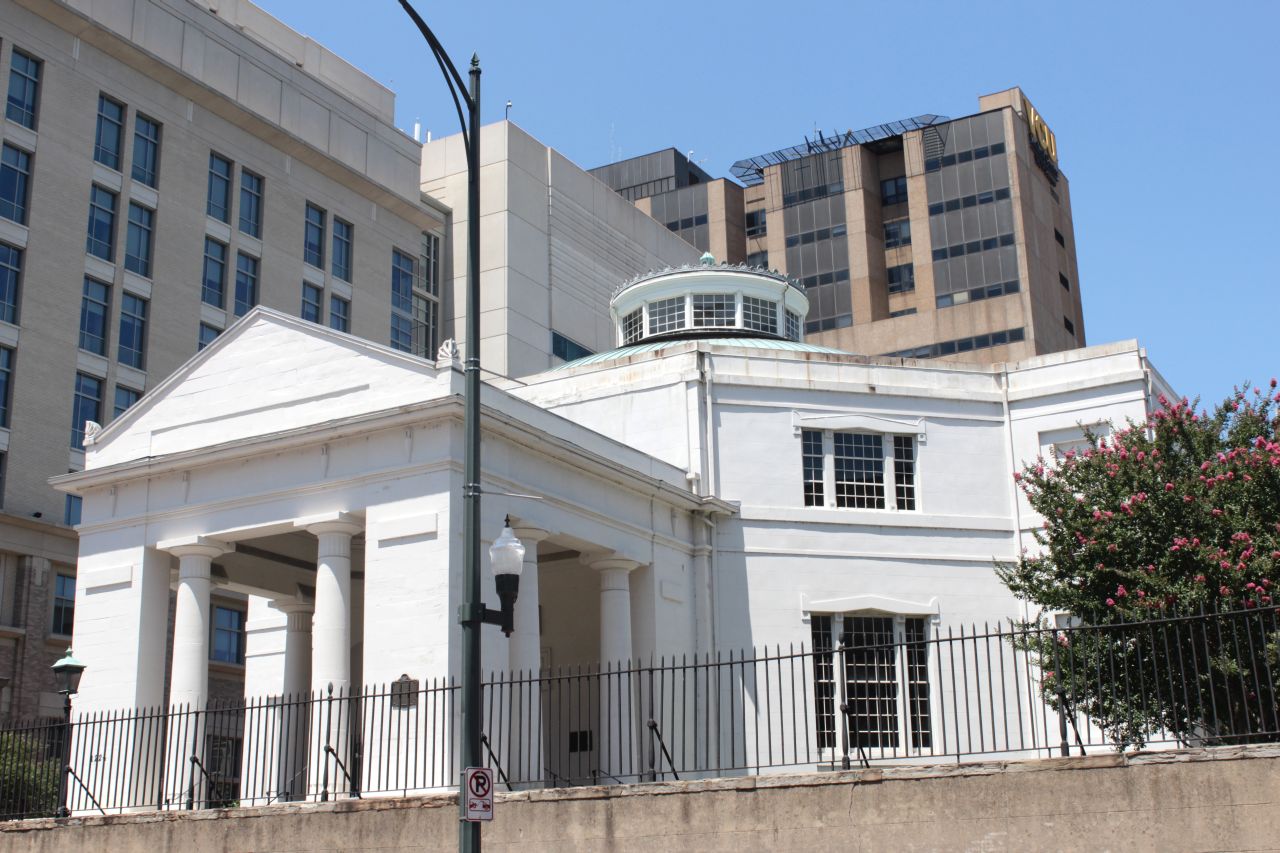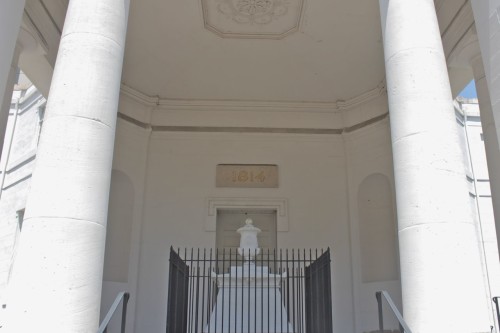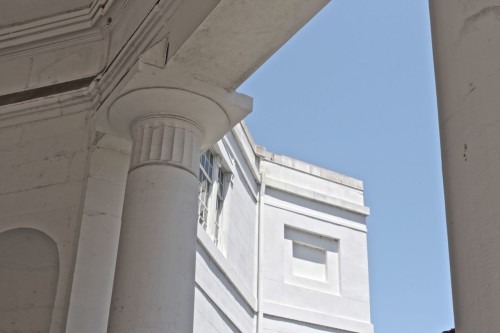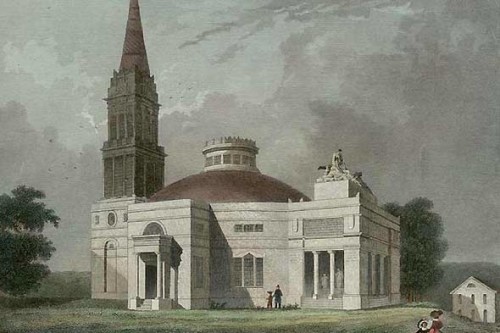Architect: Robert Mills
Date: 1812
Address: 1224 E Broad St
Holding a more prominent location on Broad Street in Court End but perhaps more forgotten than the adjacent Egyptian Building, Monumental Church was constructed thirty years prior to the MCV landmark and remains as an equally important structure.
The church was constructed in memoriam of the 72 people who died during the 1811 fire of the Richmond Theatre, including the governor of Virginia at the time. The fire was, at the time, the worst urban disaster in American history.
Chief Justice John Marshall commissioned the design of the monument and church, a process that caused some controversy between the neoclassical architect Benjamin Henry Latrobe and his employee, Robert Mills. The project was awarded to Mills, designer of the Washington Monument and the first American-born professional architect. The cause of his design in Richmond influenced his later interest in fireproofing measures.
Mills’s design is a condensed octagonal shape capped by a dome with a large, protruding portico. As the only architectural pupil of Thomas Jefferson, Mills’s design incorporates French influences, most notably the low Delorme dome. The building is one of the earliest and clearest examples of Greek revival in the country, with a strong focus on geometric proportion. The sparse neoclassicism holds a solemn, religious character despite its large scale surroundings.
While formerly an Episcopal Church and chapel for the Medical College of Virginia, the church is currently owned by the Historic Richmond Foundation and open only for tours and select private functions. The marble monument in the interior underwent an extensive process of renovation, chronicled in the documentary Saving Grace: Resurrecting American History. Yet the white stucco coat still symbolically serves as a grave for those whose ashes are stored in the crypt beneath the church and as a reminder of our city’s dedication to historical preservation, both tragedy and triumph.
M.F.A













Write a Comment